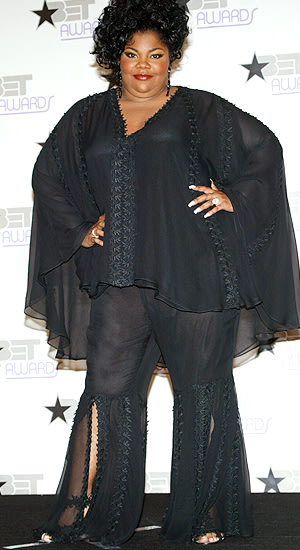4 Mistakes that Will Keep Your Hair Stuck at the Same Length
by Geniece – April 25, 2012

When I made the decision to go natural in 2004 I was under the impression that my hair would grow long and thick with little effort. My relaxed hair grew past shoulder length with relative ease, so I naturally assumed that with the elimination of harsh chemicals my hair would be stronger and longer. Now you think I was naïve but in my defense I didn’t have Youtube videos and natural hair blogs at my disposal. Armed with my non-sulfate shampoo, wide tooth comb and 5lb tub of shea butter I was ready for my hair to grow lusciously long. Well, that isn’t exactly what happened. My TWA grew out quickly enough but my hair seemed to reach a plateau once I reached shoulder length. I was stumped but not discouraged. I enjoyed my puffs and mini twists even after 2 ½ years with only about 3-6 inches of retention I wasn’t dismayed. In retrospect there are several mistakes I made over those years to which some of you may be able to relate. In ascending order here are my top four hair mistakes.
4. No regular moisturizing of my hair
The shea butter was fine to use but it didn’t add moisture to my hair. My hair was dry in between washes and remained so until I figured out that my hair needed to be moisturized in between washes and that moisture meant a water based product or just plain old water. Duh!
3. Hair Washing
I washed my hair like I was one of those models on a shampoo commercial. I lathered the shampoo by rubbing it throughout my hair and scalp without sectioning. Can you say tangles? I would then rip through my hair when detangling further ensuring that my hair never passed a certain length.
2. Dry Combing
I would almost daily rake a comb through my hair with no moisturizing product. I think this was one of my most damaging practices. The regular manipulation of my hair ensured that the tangled ends were constantly being ripped out, hence the lack of retention.
And, the top hair mistake of my natural hair journey (drum roll please):
1. Abuse of Heat
I did the occasional blow out without using heat protectant but my hair never seemed to suffer any visible damage. I even went to the salon twice to get a press and curl and my hair seemed to bounce right back. It took a really negative experience with heat for me to truly get the message that my hair care practices were nothing short of a hot mess.
The Great Heat Fiasco of 2007
In July of 2007, the most humid month of the year, I got the bright idea to flat iron my hair. I bought a ceramic iron, some anti-frizz lotion and after about 2 hours, using a heat setting of 450 degrees, I had a head of straight hair. I was rather proud of my results and wanted to maintain the look for the next two weeks. Because it was July I needed to touch up the hair daily, sometimes multiple times a day, with my flat iron set on 450 degrees. When I washed my hair two weeks later I was shocked to find straightened, limp hair rather than the fluffy shrunken fro to which I had grown accustomed. My hair was severely heat damaged. The damage was so severe that when I went to a hair stylist she questioned if I was growing out my relaxer before I could even explain my heat damage. To deal with the two textures I decided to disguise the damage by wearing updos. I slowly trimmed off the ends and by mid 2008 I was damage free and at about the same length I was prior to my heat fiasco. Although the experience was unfortunate it was a wake up call. I learned that my hair was not invincible. I also gained a newfound appreciation for my natural hair texture. I vowed not to do anything to compromise my texture from then on out.
This is a picture of my heat damaged hair. If I’d known the hair wouldn’t revert I probably wouldn’t be cheesing so hard.

After my heat damage experience I began to think more seriously about hair care. In the beginning of 2009 I thought about charting my length retention. I never followed through because I was so fed up with my hair. It wasn’t until November of 2009 when I decided actively change my practices that I started to document my hair journey regularly on my youtube channel and in photos.
Pressed hair in January 2009 (I don’t know if you can tell but those ends are raggedy.)

I look back on these pictures and realize that I’m glad I made these mistakes sooner than later. I didn’t like having to trim away 3-8 inches of heat damage but if I made this mistake now it’s possible I’d have to trim away upwards of 17 inches of damage. Ouch!
If you’ve been discouraged over a hair set back that you’ve experienced during your hair journey then take heart, you’re in good company. You now know what NOT to do and how to better care for your natural tresses. If you haven’t experienced the kind of setbacks that I have described then please, PLEASE, learn from my errors. Wishing you all a happy hair journey!
Ladies, what mistakes have you made that kept your hair stuck, length-wise?
Labels: combing, hair, hair length, lengthen, moisturizing, washing





















